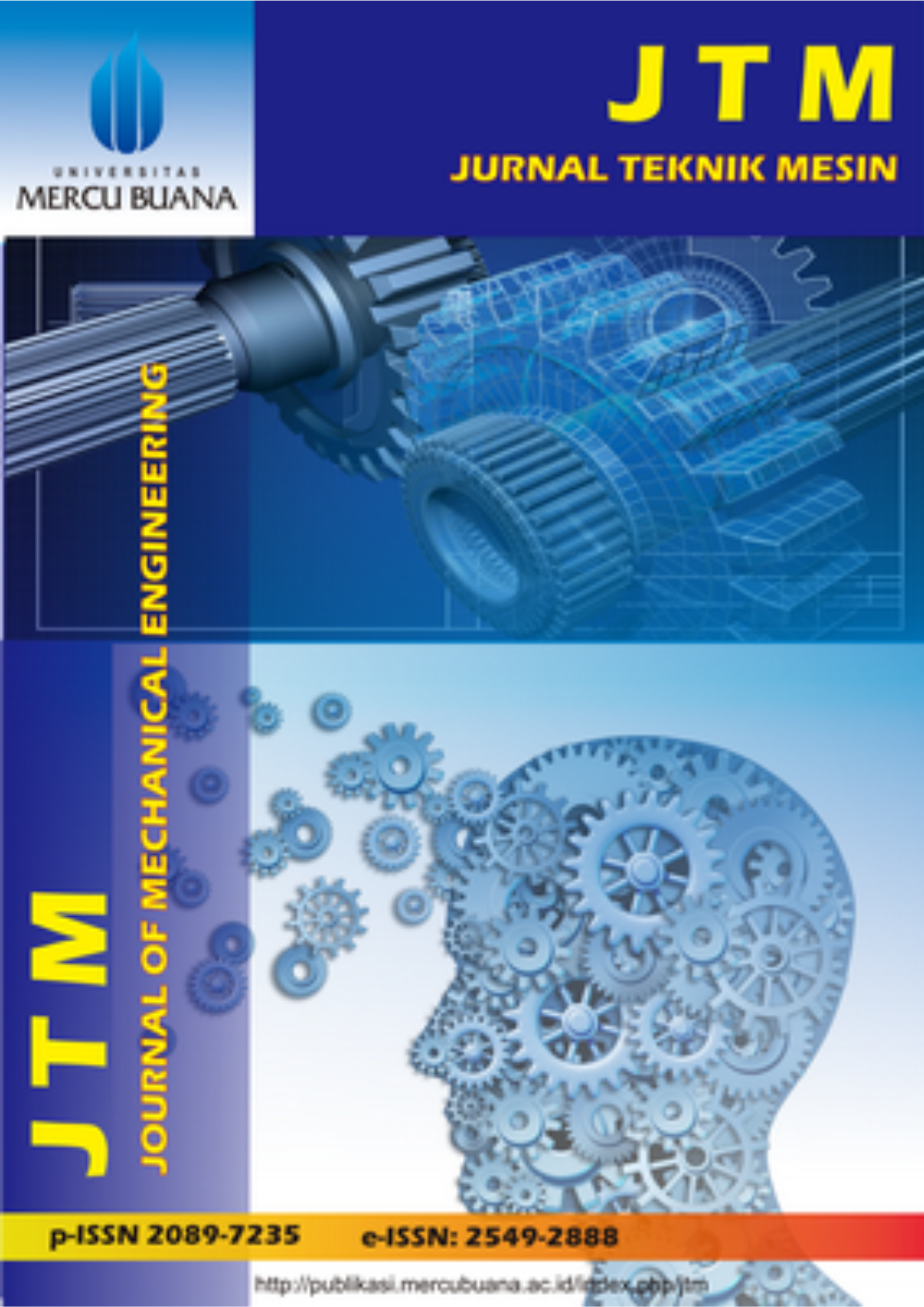Design Of Automatic Citrus Fertilizer Irrigation System Based On Photocell Timer
Abstract
Keywords
Full Text:
PDFReferences
A. J. Zapata-Sierra and F. Manzano-Agugliaro, “Controlled deficit irrigation for orange trees in Mediterranean countries,” J Clean Prod, vol. 162, 2017, doi: 10.1016/j.jclepro.2017.05.208.
L. K. Silveira, G. C. Pavão, C. T. dos Santos Dias, J. A. Quaggio, and R. C. de M. Pires, “Deficit irrigation effect on fruit yield, quality and water use efficiency: A long-term study on Pêra-IAC sweet orange,” Agric Water Manag, vol. 231, 2020, doi: 10.1016/j.agwat.2020.106019.
J. G. Pérez-Pérez, J. M. Robles, and P. Botía, “Influence of deficit irrigation in phase III of fruit growth on fruit quality in ‘lane late’ sweet orange,” Agric Water Manag, vol. 96, no. 6, pp. 969–974, Jun. 2009, doi: 10.1016/J.AGWAT.2009.01.008.
S. Consoli, F. Stagno, D. Vanella, J. Boaga, G. Cassiani, and G. Roccuzzo, “Partial root-zone drying irrigation in orange orchards: Effects on water use and crop production characteristics,” European Journal of Agronomy, vol. 82, 2017, doi: 10.1016/j.eja.2016.11.001.
M. T. Treeby, R. E. Henriod, K. B. Bevington, D. J. Milne, and R. Storey, “Irrigation management and rootstock effects on navel orange [Citrus sinensis (L.) Osbeck] fruit quality,” Agric Water Manag, vol. 91, no. 1–3, 2007, doi: 10.1016/j.agwat.2007.04.002.
I. F. García-Tejero, V. H. Durán-Zuazo, J. Arriaga, and J. L. Muriel-Fernández, “Relationships between trunk- and fruit-diameter growths under deficit-irrigation programmes in orange trees,” Sci Hortic, vol. 133, no. 1, 2012, doi: 10.1016/j.scienta.2011.10.022.
T. Adamo, D. Caivano, L. Colizzi, G. Dimauro, and E. Guerriero, “Optimization of irrigation and fertigation in smart agriculture: An IoT-based micro-services framework,” Smart Agricultural Technology, vol. 11, Aug. 2025, doi: 10.1016/j.atech.2025.100885.
B. Nsoh et al., “Internet of Things-Based Automated Solutions Utilizing Machine Learning for Smart and Real-Time Irrigation Management: A Review,” Sensors, vol. 24, no. 23, p. 7480, Nov. 2024, doi: 10.3390/s24237480.
P. Kalpana, L. Smitha, D. Madhavi, S. A. Nabi, G. Kalpana, and S. Kodati, “A Smart Irrigation System Using the IoT and Advanced Machine Learning Model-A Systematic Literature Review,” Oct. 02, 2024, Prof.Dr. İskender AKKURT. doi: 10.22399/ijcesen.526.
A. El Mezouari, A. El Fazziki, and M. Sadgal, “Smart Irrigation System,” IFAC-PapersOnLine, vol. 55, no. 10, pp. 3298–3303, Jan. 2022, doi: 10.1016/J.IFACOL.2022.10.125.
M. Morcillo, M. Á. Moreno, R. Ballesteros, R. Arias, and J. F. Ortega, “Validation of the FERTI-drip model for the evaluation and simulation of fertigation events in drip irrigation,” Smart Agricultural Technology, vol. 10, Mar. 2025, doi: 10.1016/j.atech.2025.100803.
S. Xing et al., “Effect of dynamic pressure and emitter type on irrigation and fertigation uniformity of drip irrigation systems,” Agric Water Manag, vol. 312, p. 109418, May 2025, doi: 10.1016/J.AGWAT.2025.109418.
J. Patel, A. Dubey, A. Singh, and B. Mathew, “Automatic Drip Irrigation using IoT and Machine Learning,” International Journal for Research in Engineering Application & Management (IJREAM), vol. 07, p. 2, 2021, doi: 10.35291/2454-9150.2021.0222.
D. Bhavsar, B. Limbasia, Y. Mori, M. Imtiyazali Aglodiya, and M. Shah, “A comprehensive and systematic study in smart drip and sprinkler irrigation systems,” Smart Agricultural Technology, vol. 5, Oct. 2023, doi: 10.1016/j.atech.2023.100303.
C. Sheline, F. Grant, S. Gelmini, S. Pratt, and A. G. Winter V., “Designing a predictive optimal water and energy irrigation (POWEIr) controller for solar-powered drip irrigation systems in resource-constrained contexts,” Appl Energy, vol. 377, Jan. 2025, doi: 10.1016/j.apenergy.2024.124107.
DOI: http://dx.doi.org/10.22441/jtm.v14i3.36465
Refbacks
- There are currently no refbacks.
Copyright (c) 2025 Jurnal Teknik Mesin (Journal Of Mechanical Engineering)
Jurnal Teknik Mesin (JTM)
Program Studi Teknik Mesin, Fakultas Teknik, Universitas Mercu Buana
Jl. Meruya Selatan No. 01, Kembangan, Jakarta Barat 11650, Indonesia
Email: [email protected]
Telp.: 021-5840815/ 021-5840816 (Hunting)
Fax.: 021-5871335
JTM is indexed by the following abstracting and indexing services:

This work is licensed under a Creative Commons Attribution-NonCommercial 4.0 International License.






.png)







_(486_x_90_px)_(486_x_190_px)_(486_x_190_px)_(4).png)
_(486_x_90_px)_(486_x_190_px)_(486_x_190_px)_(5).png)
2.png)
.png)